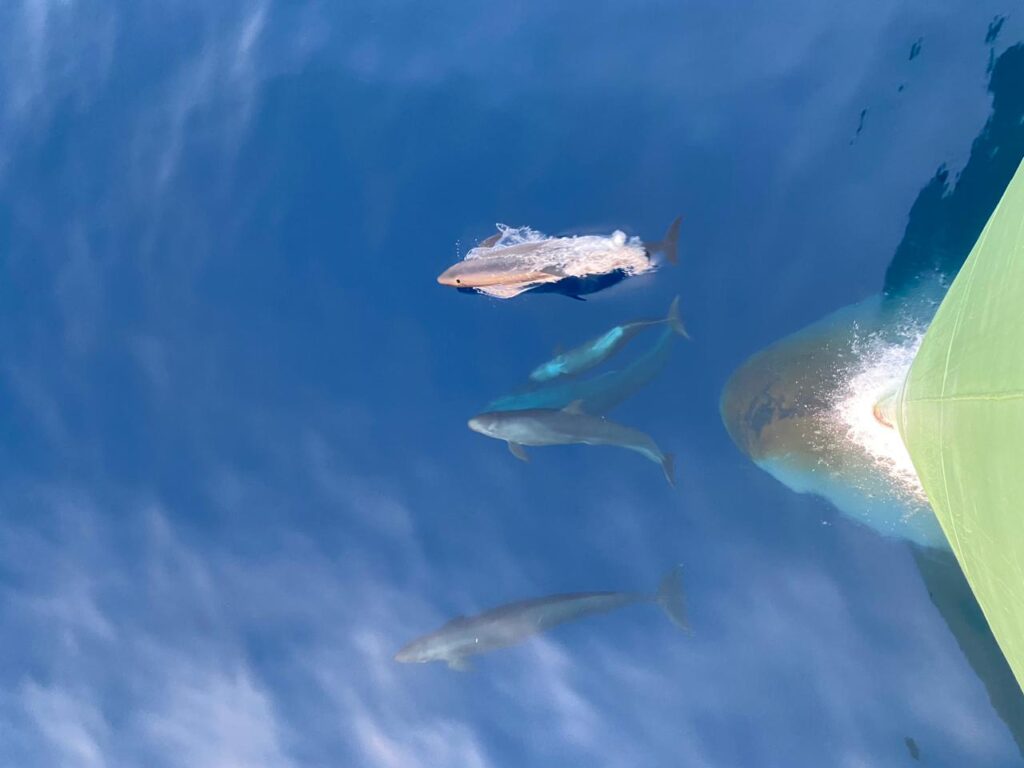Climate change presents multifaceted challenges. We understand the complex nature of possible physical impact.

We see the need for a nuanced approach to bolster the resilience of vessels and our strategic investments in the value chain. We will implement strategies that will build climate-resilient supply chains, adopt new technologies, and foster a work environment that is conscious of our impact on the environment as a business. This holistic approach not only fortifies our resilience to climate impacts but also aligns with global sustainability goals.
Scenario Analysis
We use scenario analysis as a tool to stress-test the adaptability of our business and strategy to disruptions as well as our capacity to respond to changes or uncertainties that can impact performance. While the tool is not intended to predict the future, we gain an understanding of the potential long-term impacts of physical and transitional risks, and identify opportunities associated with climate change for our business. We examine possible outcomes, the assumptions on which they are predicated, and explore probable courses of action to address potential opportunities and risks associated with climate change.
Indentifying key drivers and trends within the shipping industry
We identified key drivers and trends within the shipping industry and the market which can impact economic activity, governance structures, social values and technological change; and mapped out time horizons of associated risk. Economic and energy changes were also used to analyse and identify our key considerations to navigate climate change.
These drivers form the basis of our scenario analysis and we are working to enhance it further with assumptions from reputable organisations such as the International Energy Agency (IEA), International Renewable Energy Agency (IRENA), Intergovernmental Panel on Climate Change (IPCC), and Science Based Targets (SBTI).
| Time | Potential Risks | Potential Impact | Potential Mitigation | |
|---|---|---|---|---|
| Acute | Short to Mid (0 – 5 years) | Disruptive weather events such as longer than usual periods of low rainfall increase travel times while typhoons and hurricanes can endanger lives and vessels and hasten the deterioration of vessels from weather-related damage. | - Potential safety concerns and labour shortage as a result of accidents could increase pressure on crewing and repair costs. - Operational disruptions on trading routes may occur due to extended waiting times, as exemplified by delays at the Panama Canal, leading to reduced vessel utilisation. - The useful life of our vessels may shorten and operational costs may rise as a result of weather-related damage. - Delays in execution of terminal infrastructure investments due to weather disruptions. | We investigate the potential effects of extreme weather occurrences on operations through scenario analysis on a day-to-day basis. In particular where risk areas are recognised, we use available technology to analyse and forecast extreme weather conditions and optimise vessel rerouting. In order to maintain supply chain resilience, we collaborate with suppliers to monitor and evaluate risks. Chronic climate risks demand strategic foresight and adaptive strategies to navigate the evolving landscape of the maritime industry. Maintaining strong relations with P&I Clubs ensures a climate-adapted insurance cover, which provides the most protection in the event of extreme weather catastrophes. |
| Chronic | Long (5+ years) | Long-term shifts in climate patterns threaten operational excellence and risk management measures. | - Ports could adjust fees to cover expenditures associated with sustained maintenance requirements due to sea level rise and chronic heat waves. - Trade routes that are disrupted may lengthen and increase freight. - Costs associated with crewing may rise as a result of disrupted crew changes. - Increased insurance costs impacting the overall profitability of operations. - Sustained knock-off effects arising from supply chain disruptions to increase overall cost of procuring supplies. |
A More Quantitative Approach
A logical progression in our analysis involves incorporating a more intricate quantitative assessment. This aligns with our commitment to align with EU taxonomy requirements, ensuring that our quantitative assessment also considers the criteria set forth in the taxonomy for sustainable economic activities. We recognise the challenges associated with quantifying climate-related risks and opportunities. The uncertainty surrounding climate impact, the dynamic policy and regulatory landscape, and the accuracy of predictive models present ongoing challenges in this assessment.
Initiatives
Management
We characterise climate change management as the oversight of potential physical risks arising from climate-related factors. We seek to address risks that have a direct impact on assets from climate-related events, and indirect impacts on global value chain and resources.
Our experienced operations and technical teams are adaptable and can implement new vessel design and technology to enhance our vessels’ resilience, stability and manoeuvrability. On a regular basis, the teams conduct routine maintenance work and communicate with port agents to understand the disruptions at ports due to weather events.
In exploring growth opportunities along the value chain, climate considerations shall be taken into account during the planning and execution of the project. These are currently evaluated with support from experts in the infrastructure space. Together, we ensure that we assess, manage and mitigate the impact from extreme weather phenomenons and the potential knock-on impacts on global supply chains which can disrupt the progress of construction.
Risk Identification
Risks are identified through the course of business activities, in parallel with aspect identification as part of ISO14001 and highlighted as part of our annual enterprise risk assessment. These assessments cover a breadth of risk areas such as chronic and acute flooding, droughts, cyclones, and extreme winds. We assess the severity and risk these events pose and consider the mitigation plans available as part of daily operation of our vessels,
Significant risks will be incorporated into our enterprise risk management process where the risks are evaluated using our risk assessment framework and all risks prioritised with key mitigating actions presented to the Board of Directors for endorsement and execution.
Monitoring
Business Operations – We invest in Alpha Ori Technologies to leverage their expertise in smart digital solutions and accelerate fleet digitalisation. SMARTShip, an on-board monitoring system, allows for continuous monitoring of vessel voyage performances and conditions at sea. Data collected is important for optimisation initiatives as well as emergency and crisis response management. In addition to SMARTShip we are enhancing our onboard reporting system that performs validation of data reported through an onboard tool from ZeroNorth and an additional daily verification of data from DNV by using the Emission Connect platform.
All vessels receive weather maps, satellite images, and other information as provided by guidance from the operations team and port authorities. Information systems on board allow the crew to safely navigate during extreme weather events. Our VLGCs are equipped with reliable and accurate sensors, as well as complete weather monitoring solutions to enable predictions based on the sea state, wind, and all other weather conditions vital to the safety and operation of the vessel. This information is also available to the fleet performance team onshore who conduct weather routing assessments to advise vessels on the optimal vessel routes.
Supply Chain – Beyond our immediate operations, the ripple effects of climate change extend to our supply chain, underscoring the importance of robust strategies to address potential disruptions. To this end, we communicate with our key suppliers actively to obtain up-to-date information on potential price fluctuations and changes to delivery lead times, and actively planning ahead to secure the necessary requirements for our vessels.
Even as we have a comprehensive risk evaluation process in place within our supply chain, we continue to explore the enhancement of our vendor due diligence process through a more detailed assessment of climate-related risks.

